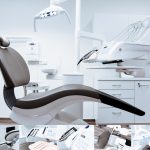
Dental X-rays are an indispensable tool in modern dentistry. They provide crucial insights into the health of teeth and surrounding tissues that are not visible during a standard dental examination. Using this imaging technology, dentists can detect issues early on, from cavities and bone loss to abscesses and impacted teeth. Identifying these problems at an early stage facilitates timely intervention, ultimately aiding in preserving oral health and preventing more severe complications.
These imaging techniques are vital in diagnosing, managing, and preventing oral health issues. Here’s an expanded look at why dental X-rays are necessary:
1. Early Detection of Dental Problems
Dental X-rays are crucial for detecting dental problems that may not yet manifest symptoms early. For example, cavities between teeth, issues with a wisdom tooth, or problems underneath existing restorations can be challenging to detect without imaging. X-rays can reveal these issues before they become significant, allowing for early intervention. Early detection often means less invasive and more cost-effective treatment options, preventing minor problems from escalating into more severe conditions that might require complex procedures.
2. Diagnosis of Hidden Dental Conditions
Certain dental conditions are not visible during a standard visual examination. Dental X-rays can uncover a range of hidden issues, such as decay beneath the enamel, infections in the roots of teeth, and impacted teeth that might not be causing immediate symptoms but could affect overall dental health. X-rays also help detect cysts, tumors, or other abnormalities in the jawbone and oral tissues, providing a comprehensive view of the patient’s oral health that goes beyond what can be seen with the naked eye.
3. Assessment of Tooth and Bone Structure
The detailed imaging provided by dental X-rays is essential for assessing the tooth structure’s and surrounding bone’s health. They offer a clear view of the roots of the teeth, the bone supporting the teeth, and the jaw’s alignment. This information is crucial for evaluating the effectiveness of treatments like crowns, bridges, and implants. X-rays are indispensable in planning and executing complex procedures for those considering oral and maxillofacial surgery in Louisville. Additionally, X-rays help monitor bone density and detect any bone loss due to periodontal disease, which can inform treatment decisions and help maintain overall dental health.
4. Planning and Monitoring of Treatments
When it comes to planning complex dental treatments, X-rays provide invaluable information. For example, before placing dental implants, X-rays help determine the amount of available bone and the optimal placement of the implants. Similarly, in orthodontics, X-rays allow dentists to plan the movement of teeth and track progress throughout the treatment. X-rays also play a role in monitoring the success of treatments and making necessary adjustments to ensure the best outcomes.
5. Evaluation of Developmental Issues in Children
Dental X-rays are essential for evaluating the development and eruption of permanent teeth in children and adolescents. They help identify misalignment, overcrowding, and unerupted teeth, which can be critical for early orthodontic intervention. Monitoring the development of teeth and jaw structure through X-rays helps plan appropriate treatments and ensure that the child’s dental development proceeds normally.
6. Detection of Periodontal Disease
Periodontal disease, also known as gum disease, can lead to significant damage if not diagnosed and treated early. Dental X-rays are essential for detecting bone loss around the teeth, a key indicator of periodontal disease. By assessing the extent of bone loss and the condition of the supporting structures, X-rays help diagnose the disease’s severity and guide appropriate treatment to manage and control it effectively.
7. Identification of Abnormal Growths or Lesions
Dental X-rays help identify abnormal growths or lesions in the oral cavity that may not be visible during a visual examination. These might include benign or malignant tumors, cysts, or other unusual formations. Early detection of such abnormalities allows for timely investigation and treatment, crucial for preventing severe health issues and ensuring necessary interventions are performed as soon as possible.
8. Guidance for Tooth Extraction
When a tooth extraction is necessary, X-rays provide crucial information about the tooth’s root structure and its relationship to surrounding tissues. This helps dentists plan the tooth extractions procedure more effectively, minimizing the risk of complications. For example, X-rays can reveal whether a tooth is impacted, has multiple roots, or is adjacent to critical structures such as nerves, guiding the extraction technique and ensuring a smoother procedure.
9. Assessment of Trauma or Injury
In the event of dental trauma or injury, X-rays are used to assess the extent of damage to the teeth and surrounding structures. They can show fractures, teeth displacement, and bone damage, which is essential for determining the appropriate course of treatment. X-rays also help monitor the healing process following an injury, ensuring the affected areas recover correctly.
10. Improved Diagnostic Accuracy
Overall, dental X-rays enhance the accuracy of diagnosis and treatment planning. They provide a detailed and comprehensive view of the oral structures that complement the clinical examination. By combining visual and radiographic information, dentists can make more informed decisions, tailor treatments to individual needs, and improve patient outcomes. Using X-rays in dental practice supports better diagnostic precision and ensures effective oral health management.
Wrapping Up
Dental X-rays play a vital role in comprehensive dental care. They enable the early detection and treatment of various dental issues that could go unnoticed until they become severe. These diagnostic tools help dentists develop more effective treatment plans and ensure better long-term outcomes by providing a complete picture of a patient’s oral health. The benefits of dental X-rays underscore their necessity in maintaining optimal dental health and overall well-being.























































